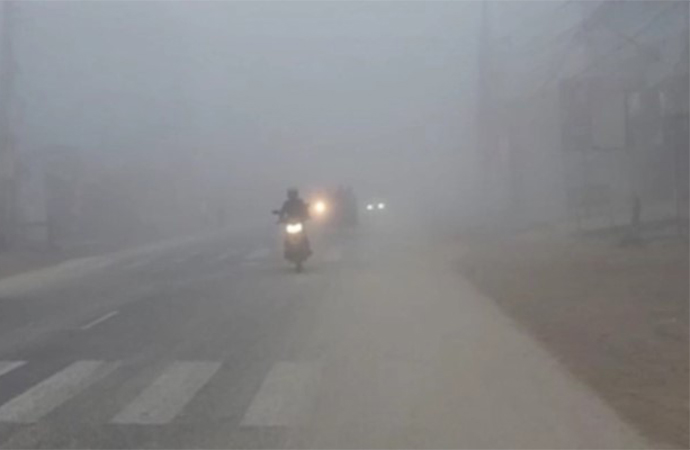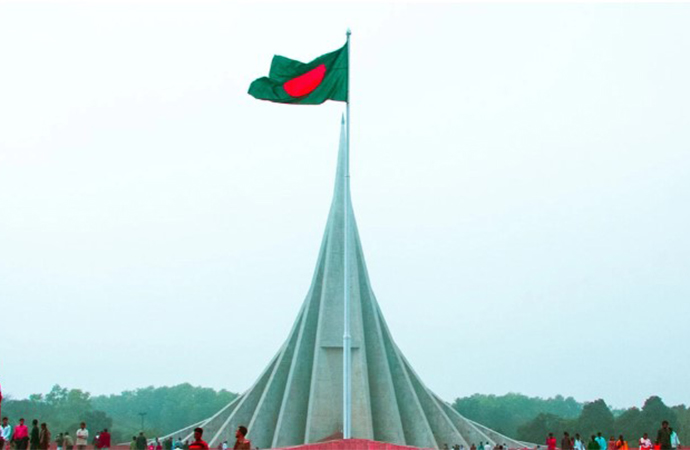Culture

Producer Frank Marshall, from left, producer Kathleen Kennedy, Ethann Isidore, Phoebe Waller-Bridge, director James Mangold, Harrison Ford, Shaunette Renee Wilson, Boyd Holbrook, Mads Mikkelsen, producer Simon Emanuel and festival director Thierry Fremaux pose for photographers upon arrival at the premiere of the film 'Indiana Jones and the Dial of Destiny' at the 76th international film festival, Cannes, southern France, Thursday, May 18, 2023. Photo: AP/UNB
The Cannes Film Festival is on, which means stopwatches are out.
Nowhere are the length of standing ovations at high-wattage premieres more carefully recorded and parsed than in Cannes. Did a movie garner a triumphant eight-minute standing ovation? Or did the audience stand for a mere four or five minutes?
How has such an unlikely metric come to reverberate around the world within minutes of a premiere? And why is everyone standing for so long? Doesn't anyone's hands get tired?
Such effusive displays of enthusiasm have come to be a hallmark of Cannes and, sometimes, a bit of marketing gimmick for films looking to resonate far from the Croisette. If Cannes, the world's largest and glitziest film festival, stands for cinematic excess, its thunderous standing ovations can seem like its greatest overindulgence. No one needs a bathroom break?
Less widely understood, though, is how the pageantry of Cannes shapes and distorts standing ovations. When audiences rise after the credits roll in the Grand Theatre Lumière, Cannes' biggest screen, they aren't just standing and applauding the movie they just watched.
Immediately after a film wraps, a cameraman swoops in and begins shooting the filmmaker and cast members, who are sitting in the middle of the theater. That video plays live on the screen for everyone inside while the camera - often very patiently - puts each prominent actor in close-up. Applause is only partly for the movie; it's also for each star.
When "Indiana Jones and the Dial of Destiny" recently premiered in Cannes, the camera gave Mads Mikkelsen, Phoebe Waller-Bridge, Ethann Isidore, Harrison Ford and director James Mangold each their own moment to bask in adulation. In the end, trade publications - which have reporters inside the theater to keep time - clocked the standing ovation at five minutes. Variety pronounced it a "lukewarm" reception.
Inflation may be such a scourge that it's even affecting standing O's. In most places in the world, a five-minute standing ovation would count as a dream response. In Cannes, it's supposedly as tepid as a day-old espresso.
Reviews for "Dial of Destiny" were, indeed, mixed. But it's also possible that the audience - or the movie's stars - had had enough after a 142-minute movie that was preceded by a much-cheered tribute to Ford. The next day, a visibly emotional Ford called the experience "indescribable."
"The warmth of this place, the sense of community, the welcome is unimaginable," said Ford. "And it makes me feel good."
Much of how long a standing ovation endures relates to whether the film's stars push it along or cater to the camera. At the premiere of Martin Scorsese's "Flowers of the Killer Moon," after the film's expansive cast had gotten their close-ups, Leonardo DiCaprio and others in the film kept clapping, even when most of the auditorium had stopped. Then, Osage tribe members rallied more life into the applause with loud, celebratory whooping.
Nine minutes was ultimately the call for "Flowers of the Killer Moon," enough to mark a high for this year's festival. Scorsese's period epic draw the kind of headlines that every film wants out of Cannes. Movies don't get second chances for a first impression, after all.
And for those who experience such responses first-hand, it can be deeply emotional. In 2015, Todd Haynes' luminous '50s romance "Carol" launched in Cannes with a 10-minute standing ovation.
"I don't think we put on the poster that there was a 20-minute standing ovation at Cannes," says Christine Vachon, the film's producer. "But when it happens, and a movie is celebrated after a lot of hard work, of course it's incredibly gratifying."
The longest Cannes ovation on record belongs to Guillermo del Toro's "Pan's Labyrinth," which scored a 22-minute feting, enough time to watch an episode of "Seinfeld" without the ads. Michael Moore's "Fahrenheit 9/11," on its way to winning the Palme d'Or at the 2004 Cannes, was applauded for 20 minutes. Jeff Nichols' "Mud" was cheered for 18 minutes in 2012.
A stopwatch-breaking ovation doesn't always translate to quality. Lee Daniels' "The Paperboy" isn't exactly considered a modern-day classic, but it managed a 15-minute standing O in 2012.
Cannes has long been known for its passionate responses. Some hugely revered films, like Francis Ford Coppola's "Apocalypse Now," have famously been booed at the festival. But boos are more likely to be heard in the press screenings than the gala formal-attire premieres. At those, a standing ovation is more or less a matter of etiquette.
At this year's festival, the most star-studded films have gone over well. Haynes' "May December," with Natalie Portman and Julianne Moore, nearly matched the response to his "Carol," with an eight-minute ovation. Karim Aïnouz's historical drama "Firebrand," starring Alicia Vikander and Jude Law," clocked in with the same. Vikander called the high-decibel roar of the crowd a stirring, unforgettable experience.
"I was shivering a bit," Vikander said. "It really gets to you."
From The Associated Press

























Leave a Comment
Recent Posts
Banglar Jishu
Merry Christmas! I mean it. Here’s why. Nirendranath Chakr ...
2024: A Year of Historic Recko ...
As 2024 comes to a close, we can only reflect on the second chance at ...
China reaffirms continued support for Bangladesh's d ..
‘Have so many things to offer each other’: Pranay Ve ..
Accurate, balanced diplomatic reporting to stop misi ..
Pakistani airstrikes in eastern Afghanistan killed 4 ..